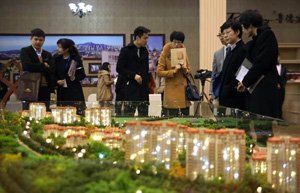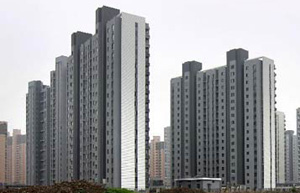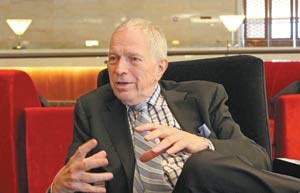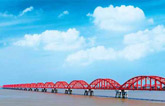Companies keen to pay for prime CBD locations
(China Daily) Updated: 2014-08-01 07:40An expert in commercial property, JLL was selective about when to sign its tenancy contract. "I think our rent is at the lower level among tenants of the building as we came here when the net take-up of the city's office market was low," said Zhang.
Zhang said Beijing's office market hit bottom at the end of 2009, but rents climbed in 2011.
Surrounded by numerous banking and insurance companies, law firms as well as multinational companies, JLL hopes to attract more talent, win clients' trust and improve its expertise in the commercial property market.
"Employees and our customers will be happy to see our stable growth within one area," said Zhang.
Still, the CBD is not the most expensive area in Beijing. With domestic financial companies continuing to expand to Financial Street, prime office rental growth is continuing there.
But worsening traffic conditions and a lack of new supply in the CBD is pushing some companies to look into emerging industrial parks.
"An increasing number of companies such as Siemens AG, Alstom SA and Microsoft Corp, are establishing their headquarters in the capital's Wangjing area," said Liu Bing, head of investment and advisory services at North China DTZ, a real estate consulting firm.
Office space in industrial parks is much cheaper than in the CBD. Beijing CBD rent tallied 336.9 yuan ($55) per square meter in the second quarter, while the Beijing grade-A office rent was 300.8 yuan per square meter per month, according to DTZ.
In Shanghai, grade-A office vacancy rate in the Pudong New Area fell to a record low in the past six years, to approximately 1.2 percent, said a report by Colliers International, a commercial real estate service company.
By the end of June, average rent in the Pudong grade-A office market rose by 3.8 percent year-on-year to approximately 9.1 yuan per square meter per day, primarily supported by the robust increase in Pudong, which continued to outpace Puxi given its limited supply and increasing demand.
The CBD grade-A office market received four new completions with a combined office gross floor area of 202,452 sqm, three of them located in Puxi.
"Demand from corporations relocating from downtown areas as well as those upgrading from lower grade buildings was stimulated by the new completions, with net absorption increasing by 42.7 percent year-on-year in the first half of 2014," said the report.
James Shepherd, executive director and head of research for greater China at Cushman & Wakefield, a privately held commercial real estate services firm, said the peak of office development in Shanghai's CBD will happen between 2015 and 2017 in such large developments as Shanghai Tower, Bund Financial Center, Xujiahui Center and Pudong Financial Plaza.
"It will likely be a winner-take-all market, with good projects having high pre-commitment rates, while poor projects struggle to lease at all. Demand for Shanghai Tower (China's tallest building and the world's second-tallest) is likely to be strongest from domestic companies," said Shepherd.
Looking at South China, Guangzhou, capital of Guangdong province, demand for grade-A offices also increased in the second quarter of the year, following government policies to boost economy and increase investment in finance and technology.
Several big transactions, especially by finance, securities and high-tech companies, were reported in the second quarter in Guangzhou, according to Cushman&Wakefield.
The report predicted that the vacancy rate of grade-A offices in Guangzhou will drop to 12 percent by the end of the year as the Pearl River Delta economy has started picking up since the second quarter.
The reduced vacancy rate of grade-A offices in Guangzhou indicates stronger demand from domestic companies, said Ma Weitu, director of JLL South China.
|
 |
 |
| East China city lifts home purchase limit | Housing market faces price corrections, says think tank |
- 146 imported food batches rejected in June
- Many exporters hindered by a range of technical barriers
- CNOOC oil fields start production
- Companies keen to pay for prime CBD locations
- Console games set to lift off in Chinese market
- Top 10 best emerging economies in the world
- Li offers vision of revival for Northeast
- GM recalls Cadillac sedans in China















